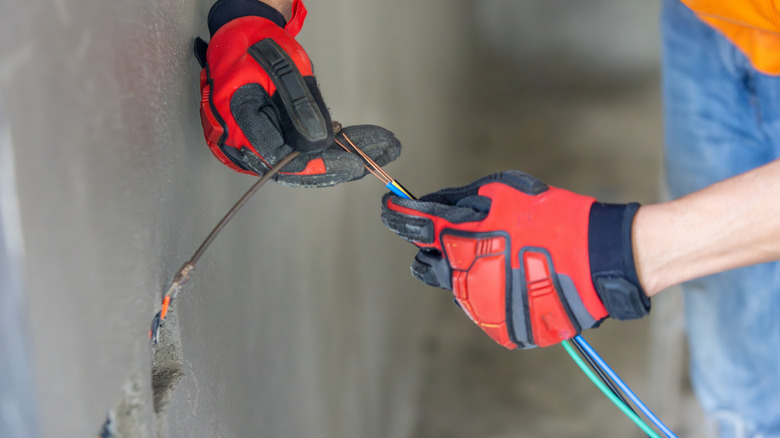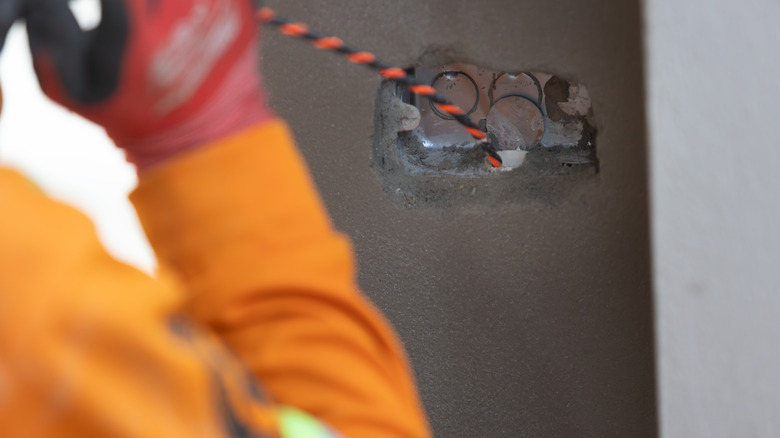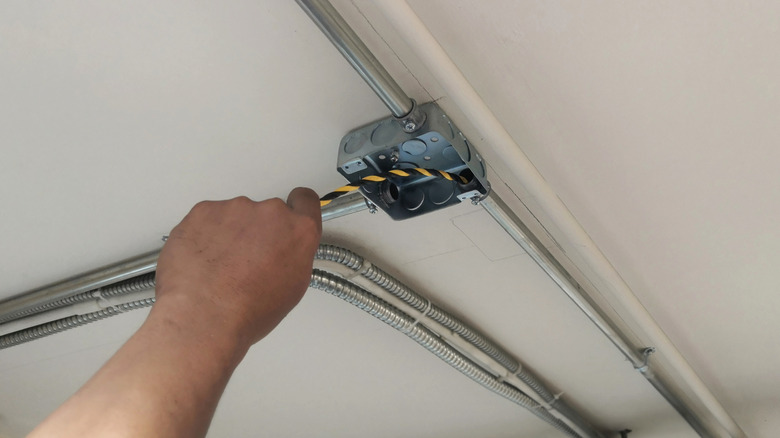What Is Fish Tape & What Is It Used For?
If you've ever tried running electrical wire through a wall or ceiling, you know that it's not as easy as it sounds. That's where electricians can count on fish tape. This tool for electricians and DIYers helps route wires through tight, tricky spots like conduits or between wall studs — exactly how the sideways installed electrical outlets can work in tight spaces. Without a fish tape, even simple electrical work could mean cutting into walls, which can be a headache.
Fish tape is basically a long, stiff strip, usually made of steel or fiberglass, coiled inside a circular case. You need to push the fish tape through the empty path, like a wall cavity, until it comes out from the other side. Then, attach your wire to the end of the tape and pull it all back through. It's a simple idea, but incredibly effective, especially when you're working blind behind walls or above ceilings. Moreover, fish tape has evolved with time to fit different needs, with safer materials, smoother reels, and even electric-powered versions for pros on the job.
The types of fish tape and their uses
Fish tape comes in a few main varieties, with each built for a specific type of job. Steel tape is considered strong and rigid, which makes it perfect for long runs or heavy wire pulls. If you're working around live circuits or need to avoid electrical contact, fiberglass tape is a safer choice since it's non-conductive. Then, there are braided steel versions, which offer more flexibility and can snake through tight bends better than traditional stiff tape.
For outdoor or damp locations, stainless steel fish tapes hold up better over time since they resist rust. Some brands, like IDEAL, even offer laser-etched measurement marks so you can track how far you've pushed the tape into the conduit. Their Tuff-Grip cases are built to handle drops and let the tape slide out easily without getting twisted or stuck — something every electrician appreciates. If you're just doing occasional work at home, a 25- or 50-foot basic tape is usually enough. On the other hand, professionals often stock multiple sizes to suit whatever the job throws at them.
How to use fish tape effectively
The technique is pretty straightforward, but getting a clean wire pull takes a bit of prep. First, feed the tape through your conduit or pathway until it exits on the other end. Then, loop your wire through the eyelet, twist it securely, and wrap it tightly with electrical tape. This prevents snagging and helps it glide smoothly back through. If you're pulling multiple wires, stagger the ends and bundle them neatly — it'll make the pass easier.
For longer or more stubborn passes, many pros apply wire-pulling lubricant to reduce friction. You can also use fish tape accessories like swivel-ball leaders or eyelets to guide the tape through sharp corners without twisting your wires. Also, if the tape breaks or kinks, field repair kits can save the day. Manual fish tape gets the job done, but if you're handling large-scale projects, power tools from Milwaukee like M18 Angler can really speed things up while saving your arms from a workout. With a little tape, you'll have your electrical project complete in no time.


